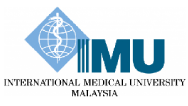Neuroendocrine carcinoma of the cervix: Review of classification and current developments in diagnosis and management
Authors: Kavitha Nagandla, Sharifah Sulaiha, Sivalingam Nalliah, Norfadzilah Mohd Yusof.
ABSTRACT
Neuroendocrine carcinoma of the female reproductive tract are a heterogeneous group of rare neoplasms posing both diagnostic and therapeutic challenges. The recent classification by WHO includes neuroendocrine carcinomas (NECs) and neuroendocrine tumours (NETs). NECs are the poorly differentiated small cell carcinoma (SCNEC) and large cell neuroendocrine carcinoma (LCNEC), while well-differentiated NETs include typical carcinoids (TC) and atypical carcinoids (AC). Majority of these tumours have an aggressive clinical course and published data is supportive of multi-modal therapeutic strategies. Etoposide/platinum based chemotherapy is commonly advocated. Histopathological categorisation and diagnosis are paramount to guide therapy. Well-differentiated carcinoid and atypical carcinoid tumours should be managed similar to gastroenteropancreatic neuroendocrine tumours. This review discusses the current classification, clinicpathologic characteristics and advances in the diagnostic evaluation and the treatment options of neuroendocrine carcinoma of the cervix.
Keywords: High grade neuroendocrine tumours, well-differentiated neuroendocrine tumours, carcinoid tumours.
Citation: IeJSME 2017 11(1): 2-11

